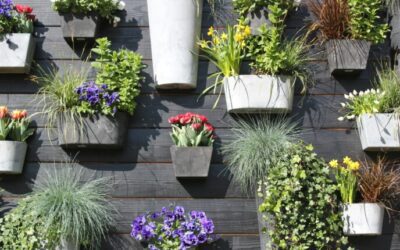
Gardener holding a bunch of radishes. (Getty Images/Unsplash)
Whether you’re growing food for home snacking and cooking or want outside decor to spruce up the yard, these nine plants are ideal in Texas conditions.
Home gardening is an enriching activity. When you’re growing food, you get to physically taste the fruits (or vegetables) of your labor. Munching on a fresh cherry tomato or creating some incredible pesto from a backyard basil plant is incredibly satisfying. Even plants that are only here for decor can brighten up a room, boost creativity, and are pleasant to look at.
However, gardening can quickly turn frustrating when plants don’t respond the way you want them to. These plants require particular care, and some are particularly finicky. Luckily, even with the less-than-favorable conditions of Texas weather, a handful of plants can survive without too much ongoing work.
One caveat, of course: Every plant is unique. Your particular region of Texas may favor one plant while hindering the growth of something else. The setting for the plant matters, too. Raised garden beds can be beneficial since you can add the specific soil you want for the plants you’re trying to grow.
So, what grows best in Texas? We’re sharing nine fruits, vegetables, herbs, and plants that typically can withstand the heat, plus care tips to help them thrive. Now, let’s put that green thumb to work!
1. Tomatoes
Tomatoes were the first plants I ever grew. My initial attempt used a planter that was much too small, as tomato plants tend to have several different offshoots as they start growing. Nevertheless, the tomatoes persisted, and I still remember that first glorious bite into the bounty the plant produced.
Full-size tomatoes are doable, though beginners will likely have more luck with a smaller variety, such as grape or cherry tomatoes. And if you need any further proof of how a tomato grows best in Texas, I took a ten-day vacation and forgot to have someone water my plants. When I returned home, the plant had overtaken my entire elevated garden bed. I could not believe how many tomatoes I had and how many joyful snack attacks were to come.
When to plant: April-May or August-September
How to care for them: Full sun, water regularly, use mulch alongside soil, put stakes or a cage around the plants to keep them in check
When you’ll see results: Usually within 60 days, sometimes as early as a month

Woman picking tomatoes from her greenhouse. (Diana Light/Unsplash)
2. Okra
Okra might be Chappell Roan’s favorite vegetable to grow because certain varieties can thrive even when it’s H-O-T-T-O-G-O outside. If you plan to grow okra, look for heat-tolerant varieties, such as Clemson Spineless, Burgundy, or Texas Hill Country Red.
Some okra plants can grow pretty tall and may produce suckers. You might also see some of the lower leaves beginning to deteriorate or become yellow. In all these situations, the answer lies in pruning and trimming, which creates better airflow for the plants and limits their chances of getting sick. Yes, plants can fall ill, just like humans!
When to plant: Late April through late August
How to care for them: Full sun, water deeply every week, making sure to use well-draining soil
When you’ll see results: Within 45 to 60 days
3. Radishes
Conversely, radishes are a cool-weather plant—which makes them an ideal candidate to grow earlier in the year. Plant them in February or March, when the bulk of the frost weather is behind us. Spring radishes, like Cherry Belle, Celesta, Champion, and French Breakfast, have shorter windows of opportunity than the other plants on this list, but they also grow the fastest.
You can see your radish plants start to bloom in as little as one week. Don’t pick them immediately, but don’t wait too long, either. Overripe radishes aren’t a pleasant experience, so look for the plants to turn a lovely reddish hue with green tops. You can eat and cook both radish tops and roots.
When to plant: February to March
How to care for them: Partial shade, use well-drained and loose soil. Mix grass and leaves into the soil and water and rake the leaves to keep the soil from crusting.
When you’ll see results: Usually within 25-40 days
4. Basil
I mispronounced “basil” for a brief period because I watched both “Fawlty Towers” and “Austin Powers” regularly when growing up. Both that show and movie, respectively, have a character named “Basil” in it, but you say it differently than the herb. It’s much like the word “herb” and the name “Herb” aren’t pronounced the same. Eventually, I realized my gaffe, and I’m happy to report the mistakes no longer happen.
Speaking of mistakes, basil is a very forgiving plant in the summer. The most common variety is sweet basil, though you may also find Thai or purple basil, which add unique flavors and colors to your dishes. If you have less space, lemon basil can typically grow in containers. You can also begin growing basil plants from seeds to get a head start on the season.
When to plant: Late March after the last spring frost, all the way up to early September. Basil doesn’t do well in frosty conditions, so it needs to be hot. Thankfully, that’s very common in Texas.
How to care for them: Full sun, water deeply when the soil is dry, add fertilizer to help growth
When you’ll see results: Usually within 60 days

You might also experience needy dogs who just want a taste of your freshly made pesto, but don’t let their cuteness trick you. (Joey Held)
5. Potatoes
Potatoes are one of the more versatile veggies around. You can use them in any roasted or grilled vegetable dish, toss ‘em in a stew, turn ‘em into tots or fries, and even put eyes and fake mustaches on them. Thankfully, they’re among the easier plants to grow in Texas—just make sure you get certified disease-free seeds from a specialty shop.
A pound of seeds will lead to a harvest of about four to five pounds of potatoes, a great return on investment. Varieties like White Kennebec and Red Pontiac are both relatively common and can do well in the Texas heat. You may have better success by pre-sprouting your potatoes, but you can still plant seeds directly into the soil. Dig holes between 6-12 inches deep and 6-12 inches apart, then put your seeds in and cover them with soil. It’ll take a few months, but you’ll enjoy your bounty with proper care.
When to plant: Mid-February
How to care for them: At least 6 hours of sun per day, though they should also enjoy some time in the shade. Use loose and slightly acidic soil, and water and mulch regularly.
When you’ll see results: Usually within 90-120 days
6. Cast Iron Plant
We’re moving from edible plants to more decorative options that grow best in Texas, and we’re starting with one of the most carefree plants around. While your cast iron skillet might suffer from improper care, like leaving it soaking in the sink, a cast iron plant is pretty chill no matter where you keep it.
That’s right, this beauty is a nice addition both inside and outdoors. It can tolerate the heat and dry shade, two recurring qualities of a Texas summer. It also does well in low light and is non-toxic to dogs and cats, so it’s a great indoor plant to add some greenery to your home office or living room.
When to plant (outdoors): Mid-March to mid-June
How to care for them: Full shade, water occasionally, letting the soil dry before watering again

A pair of cast iron plants adorn an entryway. (Nino Barbieri/CC BY-SA 3.0)
7. Pride of Barbados
Do you like plants that can grow taller than you? Pride of Barbados is an excellent choice since these plants typically sprout to about eight to 12 feet in size. They love high heat and humidity, too. They’re still going strong as the brutal summers hit, even when you need to take a break in front of the air conditioner.
The stunning red and yellow color scheme is attractive to any guests, and bees and butterflies will also come to use the plant for pollination purposes. Luckily, you don’t have to do anything else for these visitors except bask in the glory of your yard turning into a Disney film.
When to plant (outdoors): April to June
How to care for them: Full sun, occasional watering, use soil with good drainage
8. Black-Eyed Susan
Personally, I prefer a Black-Eyed Susan to the Black-Eyed Peas—though “Where Is the Love?” will always be welcomed by my ears. And, based on what I’ve heard about the group, Black-Eyed Susans are far less demanding.
These biennial flowers look similar to daisies, with their vibrant yellow petals blooming around a rich, dark core. They’re generally happy in full sun as long as they have a bit of moisture to soak in. Black-Eyed Susans are also good for pollinators, and deer tend to leave them alone, so if they visit your yard, they’ll simply admire the scenery.
When to plant (outdoors): Late-February to mid-April, after the last frost of the season
How to care for them: Full sun, keep the soil well-drained and at a medium moisture level
9. Bluebonnets
These plants are bountiful across Texas and serve as the state flower. Though they’re a bit tricky to grow, you’re a gardening pro now! The biggest thing to remember with bluebonnets is that they’re used to Texas’s fairly unforgiving natural climate, so poor soil that’s heavily disturbed actually helps them grow better.
The flowers produce hard-coated seeds that may take a year or more to germinate. You can speed up this process by scarifying the seeds—one of the most delightful gardening terms out there, which means scratching the seed coats using a knife blade or sandpaper. Regular rainfall is likely enough to care for the plants, but you may need to occasionally water in dry years. Bluebonnets also don’t like competing plants, so if you plant them, let them hang out in their own area of the garden.
When to plant (outdoors): Early October to mid-November
How to care for them: Full sun and well-drained alkaline soil, water very occasionally after the initial watering.
Now that you know what grows best in Texas, you’re ready to take on whatever nature throws your way. Cheers to your new garden!

Young boy holding a blue bonnet in Texas. (Matthew Lancaster/Unsplash)
This article first appeared on Good Info News Wire and is republished here under a Creative Commons license.











